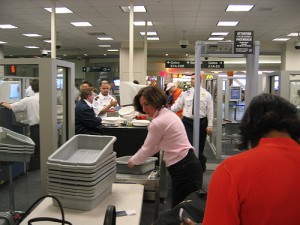 A few weeks ago, I was headed on vacation with my family and, as we stood in the airport security line, I noticed something interesting. TSA does not use lean management practices.
A few weeks ago, I was headed on vacation with my family and, as we stood in the airport security line, I noticed something interesting. TSA does not use lean management practices.
Curious, I watched to see how long it took for one person to go through the line. I also counted how many times the person scanning the bags was interrupted...by his own peers.
In the five minutes it took for one person to go through security, the TSA reps were all talking to one another, and the guy scanning our bags was interrupted by five other TSA employees.
Where are the standards for one of our country's most important positions?
It's understandable standards need to vary from airport-to-airport, in order to not provide an easy way for terrorists to strike, but what I witnessed was inefficiency at its best.
I wonder what would happen if TSA applied lean management to the security lines?
Lean Management Ideas for TSA
Some ideas include:
- They need to define each person's job responsibility. No one should be able to do what the others job should be.
- The X-ray person should be a sacred position where they are not to be interrupted or talked to so confusion doesn't occur.
- In Toyota Production Systems (TPS), there are what is called "connection points" or hand-offs to the next person responsible. This isn't happening on a consistent basis with TSA.
- They can learn from the hospital industry as they are incorporating TPS in connection points. As you can imagine, handling a sick patient is important.
Many companies—Fortune 100 and small businesses, alike—are using lean management, TPS, and Net Promoter Score to be more efficient and increase profitability.
The government's most important organization for keeping travelers safe can easily learn from the successes and failures of our country's companies.
What other ideas do you have for TSA?
